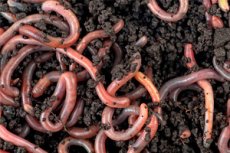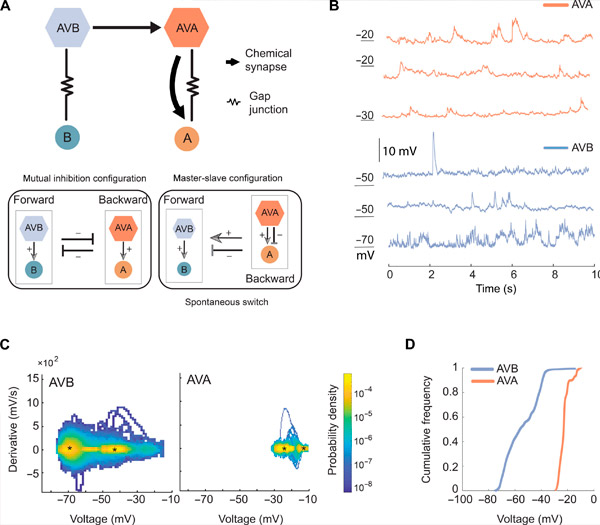
西奈健康中心和多伦多大学的研究人员发现了微小线虫秀丽隐杆线虫神经系统的一种机制,这可能对人类疾病的治疗和机器人技术的发展产生重要影响。
这项研究由梅真和卢嫩菲尔德-塔嫩鲍姆研究所的同事领导,发表在《科学进展》杂志上,揭示了一种名为 AVA 的特定神经元在控制线虫在向前和向后运动之间切换的能力方面发挥的关键作用。
对于蠕虫来说,爬向食物源并迅速逃离危险至关重要。这种行为——两种动作互相排斥——对许多动物(包括人类)来说很常见,因为它们无法同时坐下和奔跑。
长期以来,科学家们一直认为,线虫的运动控制是通过两个神经元(AVA 和 AVB)的简单相互作用来实现的。前者被认为促进向后运动,后者促进向前运动,两者相互抑制,从而控制运动方向。
然而,甄团队的新数据挑战了这一观点,揭示了一种更为复杂的相互作用,其中AVA神经元发挥着双重作用。它不仅通过抑制AVB立即停止向前运动,而且还维持对AVB的长期刺激,以确保平稳过渡回向前运动。
这一发现凸显了 AVA 神经元根据不同信号和不同时间尺度通过不同机制精细控制运动的能力。
“从工程角度来看,这是一个非常经济的设计,”多伦多大学特默蒂医学院分子遗传学教授郑教授说道。“对反馈回路进行强烈且持续的抑制,使动物能够应对不利条件并逃脱。与此同时,控制神经元会持续向正向回路泵送恒定的气体,使其移动到安全位置。”
领导这项研究的郑实验室前博士生孟军表示,了解动物如何在这些对立的运动状态之间转换是了解动物如何运动以及研究神经系统疾病的关键。
AVA神经元主导作用的发现,为科学家们自半个多世纪前现代遗传学诞生以来一直在研究的神经回路提供了新的见解。郑教授的实验室成功地利用尖端技术精确调控单个神经元的活动,并记录了活体线虫运动时的数据。
甄教授同时也是多伦多大学文理学院细胞与系统生物学教授,他强调了跨学科合作在本研究中的重要性。孟教授负责了关键实验,而神经元的电信号记录则由华中科技大学高尚邦实验室的博士生于斌完成。
托西夫·艾哈迈德 (Tosif Ahmed) 曾是郑教授实验室的博士后研究员,现在是美国霍华德休斯医学研究所珍莉莉亚研究园区的理论研究员,他领导了一项重要的数学建模工作,这项工作对于检验假设和获得新见解至关重要。

AVA 和 AVB 的膜电位范围和动态不同。来源:Science Advances (2024)。DOI:10.1126/sciadv.adk0002
该研究的结果为研究神经元如何在运动控制中发挥多种作用提供了一个简化的模型——这一概念也可以应用于人类的神经系统疾病。
例如,AVA 的双重作用取决于其电位,而电位受其表面离子通道的调节。郑教授目前正在研究类似的机制如何参与一种名为 CLIFAHDD 综合征的罕见疾病,该疾病是由类似离子通道的突变引起的。这项新发现还可以为设计更具适应性、更高效的机器人系统提供参考,使其能够执行复杂的动作。
“从现代科学的起源到如今的尖端研究,像秀丽隐杆线虫这样的模式生物在揭示我们生物系统的复杂性方面发挥了重要作用,”卢嫩菲尔德-塔嫩鲍姆研究所所长兼西奈医疗中心研究副总裁安妮-克劳德·金格拉斯说道。“这项研究是一个很好的例子,展示了我们如何向简单的动物学习,并将这些知识应用于医学和技术的进步。”

